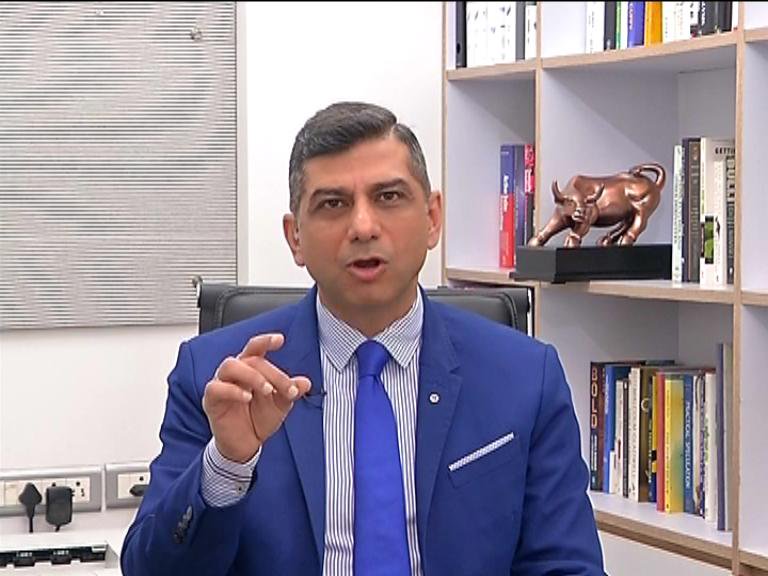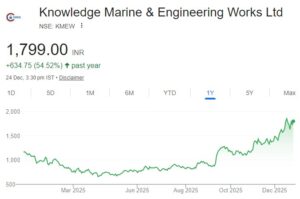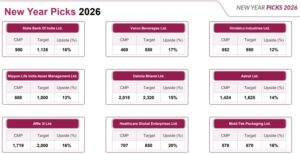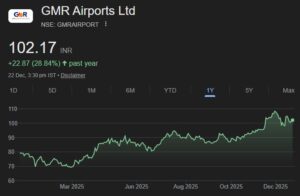
Competition for max number of stocks in portfolio
“While in Gujarat I saw a portfolio, which was four sheets long, and it had 200 stocks,” Atul Suri said, his eyes wide open in disbelief.
He was clearly shaken by the experience.
However, it appears that Atul Suri is not well versed with the exploits of the investors of Dalal Street.
In fact, there is a competition on who can stuff the maximum number of stocks in a portfolio.
At present, the World record is held by Janak Mathuradas, a sprightly nonagenarian, whose portfolio boasts of a mind-boggling 3500 companies.
The second place is shared by Arun Goenka, Indra Bagri, Ashalata & Jitendra Prakash Maheshwari. Each has a portfolio of over 1,000 companies.
Aspi Bhesania comes third in the list with a portfolio of over 800 Companies.
Vinod Dadlani is fourth with a portfolio of over 500 companies.
Prima facie, it appears that these people are not “investors” in the traditional sense.
Instead, their modus operandi is to attend AGMs and grill the top brass on various assorted issues.
No doubt, it is an achievement to command the attention of corporate tycoons like Mukesh Ambani and get him to listen attentively to one’s diatribes about how the Company’s affairs should be managed.
Some are also suspected to indulge in “amateur blackmail” in which they bargain with the Company Secretary for “goodies” in return for not asking “inconvenient questions” from the top brass.
If you buy HDFC Bank, you will earn 1 Rs less in Bull market but save Rs. 10 in Bear market
Atul Suri rationalized that the reason novice investors stuff their portfolios with all sorts of garbage stocks is because they are unsure of the quality of the stock and want to diversify risk widely.
He advised that the proper solution is to avoid buying garbage stocks and instead buy quality stocks.
“In a bull market, you will earn Re 1 less because they move slowly. But in a bear market, you will save Rs 10 more and that is how cycle of compounding works,” Suri said.
He juxtapositioned HDFC Bank (always an expensive stock) with Canara Bank, Bank of India, etc (always cheap stocks) to prove his point that quality always wins and garbage always loses.
“It’s always better to go in gradual, compounded stories,” he opined.
#BQBlueExclusive | Ace investor Atul Suri says technical analysis is a lot more than stop loss and target price. #BQEdge
Read: https://t.co/g8X12UO4is pic.twitter.com/lWvu7gjhXB
— BloombergQuint (@BloombergQuint) April 21, 2019
Prefer low volatile stocks to avoid risks and draw downs
Atul Suri cited HDFC Bank also as an example of a stock with low volatility (low beta) with corresponding low risk of a draw down.
“Keeping volatility low is the other side of compounding. Compounding and low volatility go hand in hand. It’s not just returns, but also look at risks and drawdowns. So, be careful,” he advised.
“You are much better to sit on HDFC Bank than picking on something over the last eight-10 years” he said in a firm tone.
Study of human greed and fear is the best form of technical analysis
Atul Suri made it clear that he is not much impressed by the youngsters of Dalal Street who use sophisticated computer programs to prepare technical analysis charts based on ‘RSI’, ‘stochastic indicators’ and other fancy parameters.
“I am a fossil and have been in the market for more than 20 years. When I came, technical analysis had just started but there was no software. So, the charts which I first saw were drawn on graph paper. We never had an intraday, three-five-minute chart,” he said.
“My foundation of technical analysis is graph paper, rulers and pencil. There was no RSI, stochastics. I like to look at things in simplicity,” he observed.
He explained that the best form of Technicals analysis is the study of “crowd behavior”.
“The two emotions which drives crowd is greed and fear. Sectors will change, computer models will change, fund managers and investors will change but greed and fear remain in human beings. Artificial intelligence or whatever comes but greed and fear will remain for years,” he observed.
“Until greed and fear don’t go away from humanity, technicals will work. When greed and fear go away then markets will stop functioning. So, technicals was not 3-5-minute chart, but it is how crowds behave,” he added.
Prima facie, there is merit in Atul Suri’s logic.
It is another way of encapsulating Warren Buffett’s timeless advice that investors should buy when there is fear and sell when there is greed.
Forget elections. It is irrelevant
Most people in Dalal Street have his or her knickers in a twist, worrying about the elections.
Atul Suri pointed out the worry is futile because elections are a total non issue.
He pointed out that when Donald Trump was elected as President of the USA, all pundits had predicted that the markets would crash because Trump was perceived as a “crazy guy”.
However, the reverse happened and stock markets embarked on an unstoppable Bull Run.
“Even if I know the political outcome whether Modi will come back or not, the impact it will have in the markets is a different scenario,” he pointed out.
Nifty will surge 50% to 17,000 by 2021
Atul Suri opined that the year belongs to EMs because they have under-performed and they have a very big catch-up trend yet to happen.
“We will likely see a very big move in EMs,” he said in a confident tone.
He pointed out that amongst EMs, India is much fancied as is evident from the gush of FII funds flowing into the Country.
“In the last 10 days, it is a record. In February, we saw Rs 13,000-14,000 crore of FII flows. Last time we saw a Rs 14,000 crore-plus FII number was in March 2017, when the index had a phenomenal run of 30 percent in the Nifty,” he observed.
“My prediction is that the index will make a high soon. It will almost nudge 12,000 on Nifty,” he further observed.
Atul Suri also advised that there is no point in investors awaiting “certainty” before deciding to invest.
“It will happen when most people would be waiting for certainty; but certainty will come with a price. That price is that you will not buy it at 10,800, but you will buy it nearer to 12,000. Markets have a way of surprising,” he said.
“My study predicts a Nifty of 17,000 by 2021. That is a 50 percent up-move in the next three years. It is 15-16 percent compounded”, he emphasized.
Atul Suri also sent the unmistakable hint that if the Nifty is to give a 50% return, individual stocks would obviously give multibagger returns.
“When you have an index, which compounds at this rate, if you are a good stock picker, then there is no reason why you can’t meet those objectives. It is about trying to double your money in three next three years. We are in that process and I do think it is a great opportunity,” he said.
He also reminded investors not to “get bogged down by micro issues” but to “keep out noise” and “look at the bigger picture”.
Warren Buffett looks for trends in earnings, we should too
“Find a trend, and ultimately you will make money in trends,” Atul Suri said, quoting the memorable words of Howard Lindzon.
“Trending earnings lead to trending prices. Even Warren Buffett looks for trends. If earnings are trending, you will have a trending price. Look for trends whether you use fundamentals or technical. Have the patience to ride the trend,” he said.
However, Suri cautioned that we should remember to disembark when the trend ends.
Even Warren Buffett, who claims to buy stocks for life, dumped IBM when he realized that the earnings would remain elusive.
“The biggest wealth creator could also be your biggest wealth destroyer,” and so we must exit in time, Suri advised.
My largest holding is Bajaj Finance
Atul Suri revealed with understandable pride that Bajaj Finance, the mega multibagger, is the “largest holding” in his portfolio.
However, he made it clear that he is not sitting on his laurels and staying complacent that Bajaj Finance’s status as mega multibagger would continue for ever. Instead, he is keeping a hawk eye on the stock and a red alert as to whether the trend of its earnings will change. If there is an adverse change, he will not hesitate to pull the trigger!







Even in NIFTY there are 50 stocks,in Sensex 30 stocks. So no harm till you are having below 50 no of stocks in portfolio. You should never buy any fresh quantity in a stock , which is already 10 % or more of your portfolio.
You buy good stocks not bad stocks. Simple as that. Even if it’s more than 10%. Don’t listen to amateurs